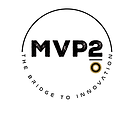How Business Process Automation AI Transforms Ideas into Reality
- Ken Wiltshire

- Mar 24
- 3 min read

Everyone's talking about artificial intelligence. But let's be honest—there's a huge gap between seeing cool AI demos and actually putting them to work in your company. This challenging space—where impressive lab demonstrations must become reliable business systems—is what I call the "Gen AI production phase." It might seem overwhelming, but tackling this challenge is essential. If you don't implement AI automation in your business your competitors certainly will.
How Smart Business Process Automation Bridges Lab Experiments and Real Solutions
This implementation challenge is exactly where solutions architects make all the difference. The gap between "it works in the lab" and "it works for my business" is where true innovation happens—where unpredictable AI must be engineered to deliver consistent, reliable business outcomes.
Consider vision language models with context windows of 128K tokens. Sounds impressive until your application actually needs to "see" and understand images. You quickly discover how limiting this window can be. It works fine for a single snapshot, but real-life applications often require processing much more information than modern AI models can handle in one go.
Gen AI itself is an incredible technological advancement (perhaps the most significant development in all our lives, with the discovery of fire being a distant second), but it's not practical for business applications until a solutions architect develops the infrastructure and support systems needed to make it commercially viable. This is just one example of the challenges that solutions architects tackle every day to implement AI-powered workflow automation. It's not a nightmare—it's literally our job. This is what we do.
The Unprecedented Impact of Intelligent Process Automation
I've heard people compare Gen AI to the industrial revolution or the invention of flight... just another "innovation." But honestly, the closest comparison we have is the discovery of fire—and even that comparison falls short. AI business process optimization will change everyone's lives at an unprecedented pace as engineers and integration specialists begin to adapt what's been built in labs for practical business use cases.
It's now our job to find ways to "productionize" AI for the deterministic outcomes required by real business systems. This conversation is happening at the forefront of every product discussion and strategic plan. Automated business intelligence is truly something every organization can leverage.
Practical Approaches to AI-Powered Workflow Automation
The hard truth is that many of our digital tasks that require decision-making can probably be safely automated with today's advanced reasoning capabilities. But beyond basic tasks like "summarize this for me," what comes next? How do you leverage smart business process automation for your specific, nuanced use case or workflow?
While there's no definitive roadmap, here are practical starting points for implementing business process automation AI:
Use AI to analyze your existing processes: Take your company's standard operating procedures, policies, or any other documentation of your internal processes—PDFs, Word docs, or whatever content you have. Then ask the AI to identify challenges and suggest how automation could help, including opportunities you might have missed.
Target repetitive and mundane tasks: Focus on areas with duplication of effort. This approach may reveal intelligent process automation opportunities that weren't immediately obvious.
The tougher question isn't "how do I begin?" but rather "how can you NOT use AI business process optimization for your specific needs?" This can feel overwhelming and scary for some. But that's exactly why solutions architects are essential in this transition—we turn the intimidating world of AI into practical, valuable business solutions.


Comments